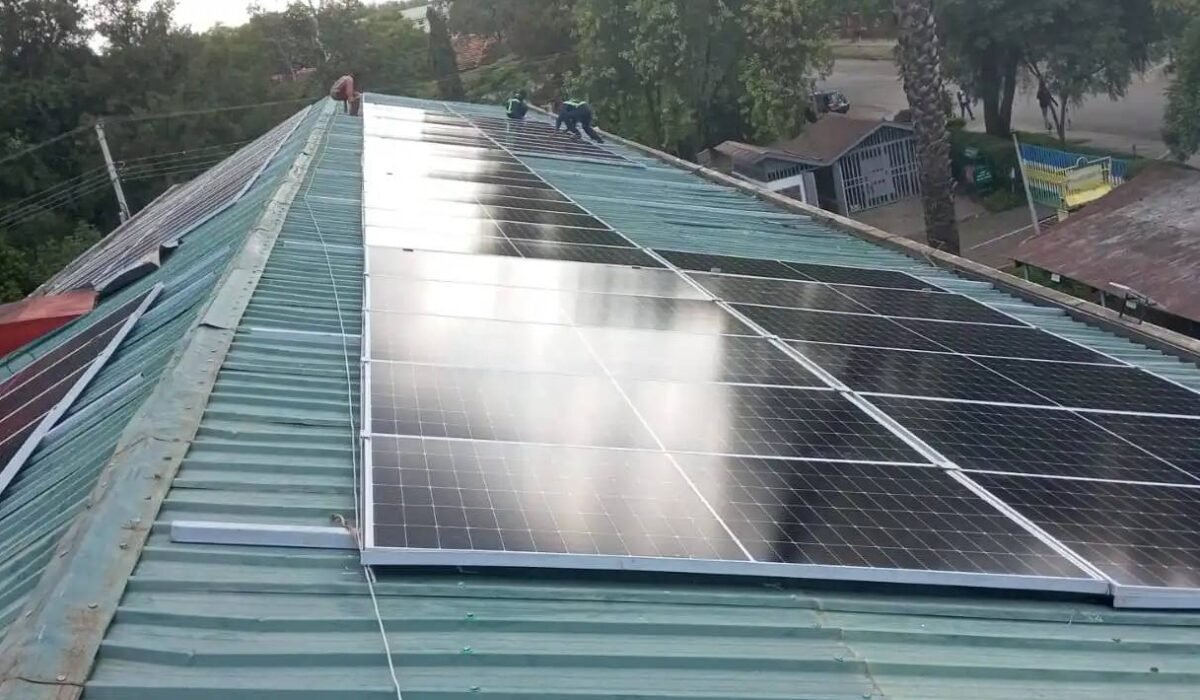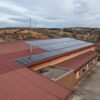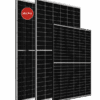Frequently Asked Questions About Solar Energy In Kenya.
What is the average cost of solar panel installation in Kenya?
A small home solar system usually costs between Ksh 200,000 and Ksh 800,000. Larger setups can go well above Ksh 1 million, depending on size and quality of components.
What factors affect the cost of a solar installation?
Costs are influenced by the size of the system, type and quality of panels and batteries, site accessibility, installation hardware, and labor charges.
How long does it take to recover the cost of solar?
Most users recover their investment in 5 to 7 years through electricity savings.
What financing options are available for solar in Kenya?
Options include personal loans, SACCOs, solar leasing, pay-as-you-go plans, and bank financing. Some NGOs and county programs also support solar access.
What maintenance does a solar system require?
Minimal maintenance is needed—mainly regular cleaning of panels and occasional inspection of wiring, batteries, and inverters.
Are there incentives or tax exemptions for solar equipment in Kenya?
Yes. The government has waived import duty and VAT on solar equipment to promote adoption.
Can I install solar panels myself?
It’s possible for technically skilled users, but professional installation is recommended for safety, system performance, and warranty validity.
What’s the lifespan of solar panels and batteries?
Solar panels can last 25–30 years with good maintenance. Batteries typically last 5–10 years, depending on usage and type.
How does solar water heating work?
Solar collectors capture sunlight to heat water stored in a tank, either directly or through a heat-transfer fluid.
What are grid‑tied vs off‑grid solar systems?
Grid-tied systems are connected to KPLC and can export excess power. Off-grid systems rely entirely on solar and battery storage, without grid dependency.
Do solar panels generate power on cloudy days?
Yes, though at reduced efficiency. Solar panels still produce electricity under diffuse light conditions.
How do solar panels work?
They use photovoltaic cells to convert sunlight into direct current (DC), which is then converted to usable alternating current (AC) by an inverter.
What components make up a solar system?
Typical components include solar panels, inverters, charge controllers, batteries, mounting structures, and wiring.
Can solar power my entire house in Kenya?
Yes, if properly sized. A well-designed system can run all household appliances, including lights, TVs, fridges, and more.
How do I determine the right system size for my needs?
Calculate your daily energy consumption in kilowatt-hours (kWh) and match it with panel output based on average sunlight hours in your area.
Is solar a good investment given rising electricity costs?
Yes. With rising KPLC tariffs and power outages, solar offers long-term savings and reliability.
Can solar panels still work at night?
No, they don’t generate power at night. Battery storage or grid backup is needed for nighttime use.
Should I invest in battery storage?
If you want power during blackouts or live in off-grid areas, investing in batteries is highly recommended.
What warranty covers solar systems?
Panels often come with 25-year performance warranties. Inverters and batteries usually carry 2–10-year warranties, depending on brand.
What environmental benefits does solar offer?
Solar reduces carbon emissions, lowers reliance on fossil fuels, and promotes a cleaner, greener environment.
Can solar water pumps work in remote areas?
Yes. Solar water pumps are ideal for off-grid farming and water supply in rural Kenya.
How reliable are solar water pumps?
Very reliable when properly sized and installed. They offer consistent performance with low operational costs.
Are solar panels affected by temperature?
Yes. Extremely high temperatures can slightly reduce efficiency, but Kenya’s climate is generally favorable for solar production.
How long does installation take in Kenya?
Most residential solar installations take 1–2 days. Larger systems or complex sites may take longer.
Can excess solar power be sold back to KPLC?
Yes, through net metering programs. A bidirectional meter is required to export power to the grid.
What is net metering in Kenya?
It allows solar users to send excess electricity to the grid and receive credit on their electricity bill.
Which brands are popular for solar pumps and inverters?
Common brands include Lorentz, Grundfos, Shakti, Victron, Growatt, and Schneider Electric.
How do I choose a reputable solar provider?
Look for licensed companies with good reviews, EPRA registration, warranty support, and experience in system design and after-sales service.
Is Kenya supporting solar through policy?
Yes. The government supports solar through tax incentives, renewable energy policies, and rural electrification initiatives.
What is KOSAP and how does it help?
The Kenya Off-Grid Solar Access Project (KOSAP) provides funding and support for solar mini-grids and home systems in underserved counties.
What are solar mini-grids?
They are community-level power systems using solar energy to serve clusters of homes, schools, clinics, and businesses.
Which solar power plants exist in Kenya?
Notable ones include Garissa Solar Plant, Malindi Solar Plant, Alten Solar in Eldoret, and Radiant-Eldosol projects.
What is the Garissa Solar Power Station?
It is a 55 MW government-owned solar plant that supplies electricity to the national grid and serves over 600,000 homes.
Tell me about the Malindi Solar Station.
A 52 MW plant operational since 2022, serving coastal Kenya. A battery storage upgrade is planned to boost reliability.
What is the KenGen floating solar project?
KenGen plans to build a 42.5 MW floating solar farm on Kamburu Dam, reducing evaporation and maximizing land use.
How does agrivoltaics work?
Crops are grown under or between solar panels, improving land use efficiency and often increasing crop yield by providing partial shade.
Does agrivoltaics work in Kenya?
Yes. Pilot projects show improved water retention and crop performance, especially in arid and semi-arid regions.
Can apartment dwellers install solar?
Yes. Balcony or rooftop solar kits with compact panels and batteries can serve small-scale power needs in apartments.
Can solar support heavy appliances?
Yes. High-capacity inverters and battery banks can power fridges, microwaves, pumps, and even industrial equipment.
Will solar heavily reduce my KPLC bills?
Yes. Many users report 60–80% reductions in electricity bills. Some completely eliminate their monthly bills.
Do I still need KPLC after installing solar?
If your system includes batteries, you can go fully off-grid. Otherwise, you may still need KPLC for backup or nighttime use.
How are solar systems monitored?
Many systems include apps or online portals that show real-time energy production and system health.
What about lockouts from pay-as-you-go solar companies?
Some PAYG systems (like M-KOPA) may disable service if payments are missed, though terms are clear in user contracts.
Are solar installations safe for rental properties?
Yes. With landlord consent, solar can be installed safely without damaging the structure. Portable systems are also available.
Do rainy seasons affect solar performance?
Yes, slightly. Output may drop on cloudy or rainy days, but systems still generate electricity.
How do I clean solar panels?
Use water and a soft brush or cloth to remove dust and debris. Avoid harsh chemicals and never use pressure washers.
How scalable are solar systems?
Systems can be expanded over time by adding more panels, batteries, or upgrading inverters.
Can businesses rely on solar power?
Yes. Solar is widely used by factories, offices, schools, and hospitals in Kenya to cut costs and ensure reliable power.
What is the future outlook of solar in Kenya?
With rising electricity costs, government incentives, and increased awareness, solar is expected to grow rapidly in both rural and urban Kenya.



